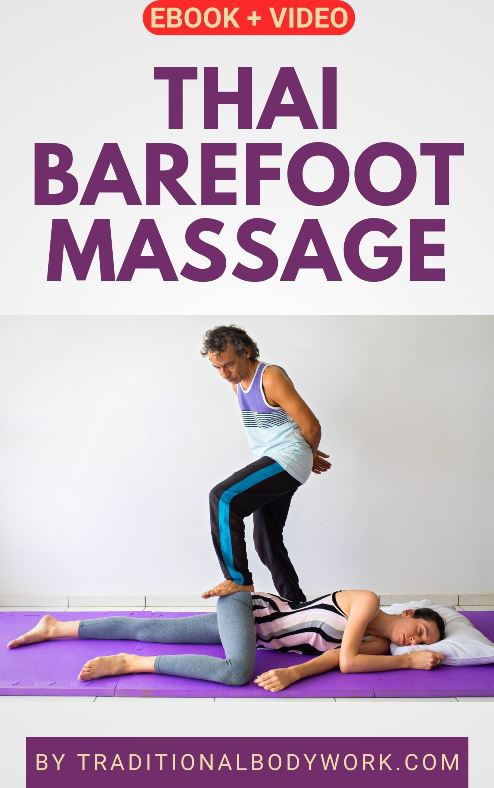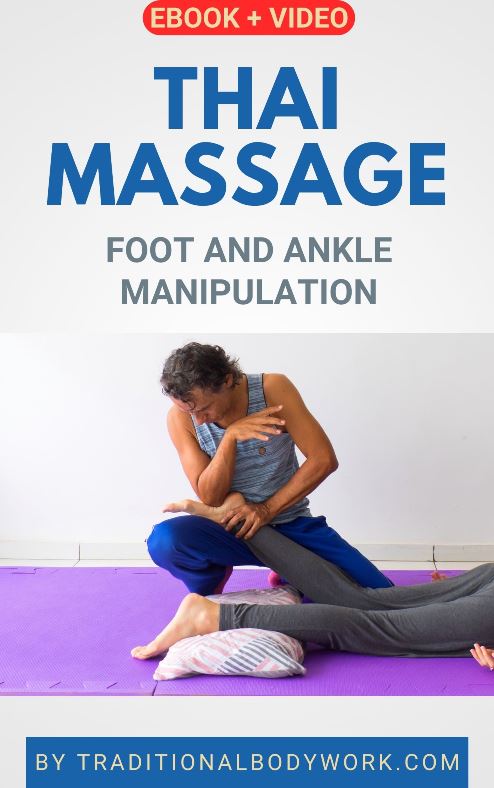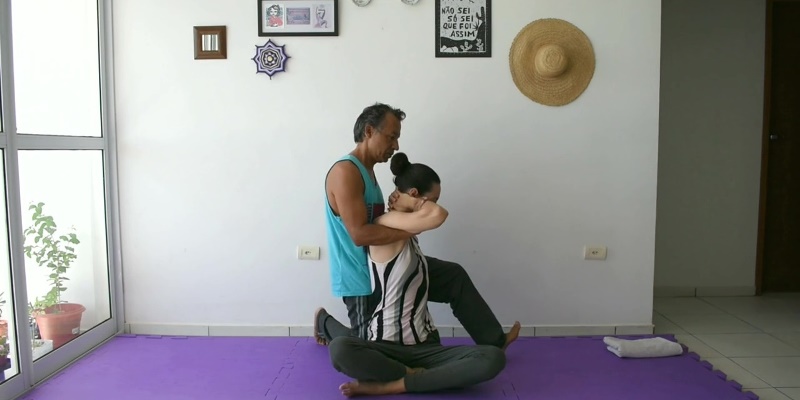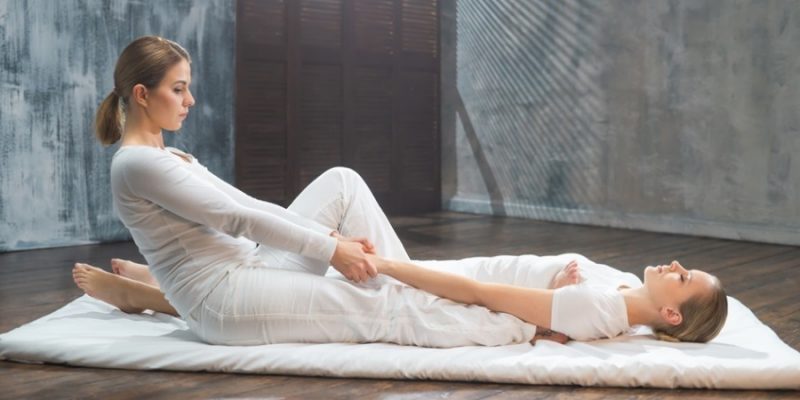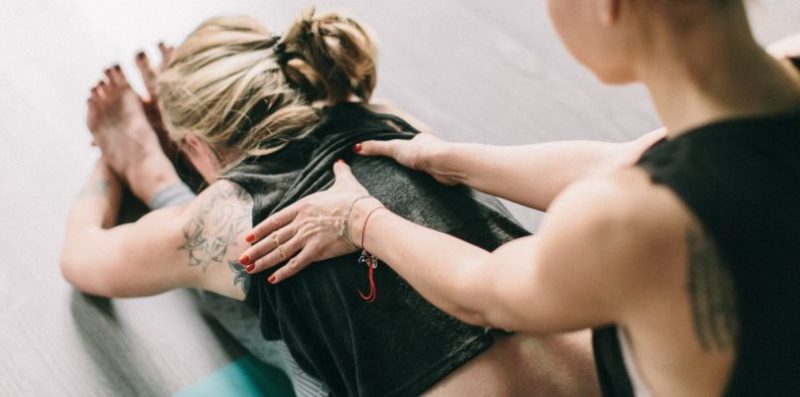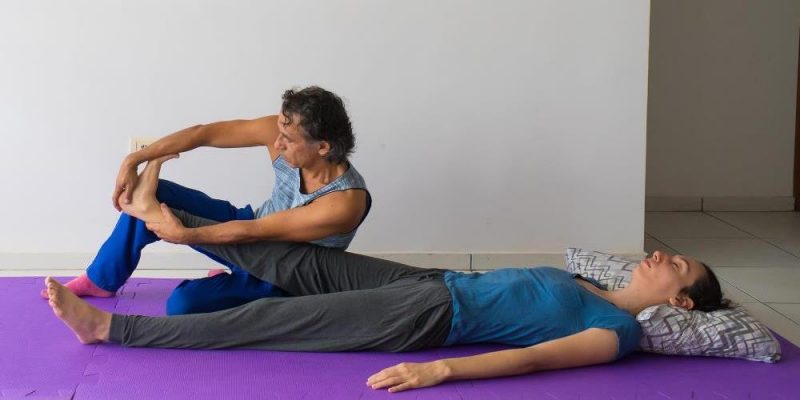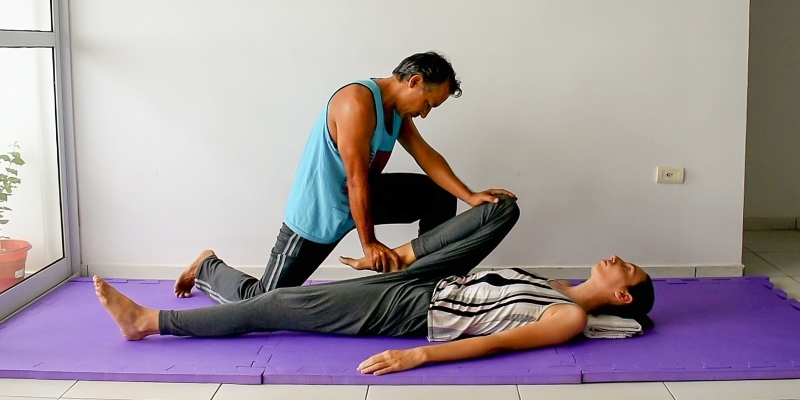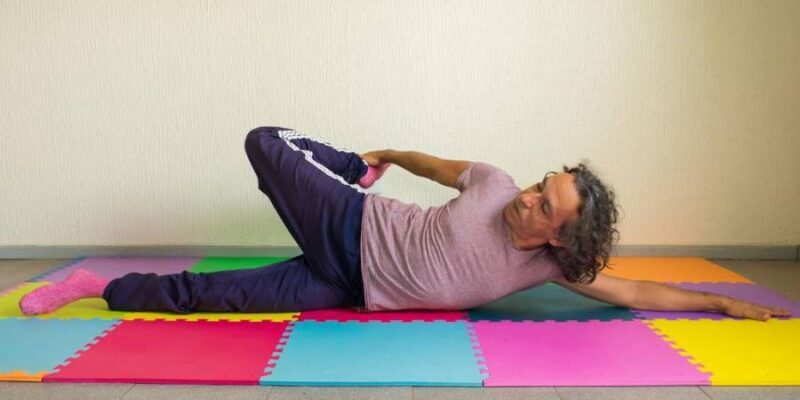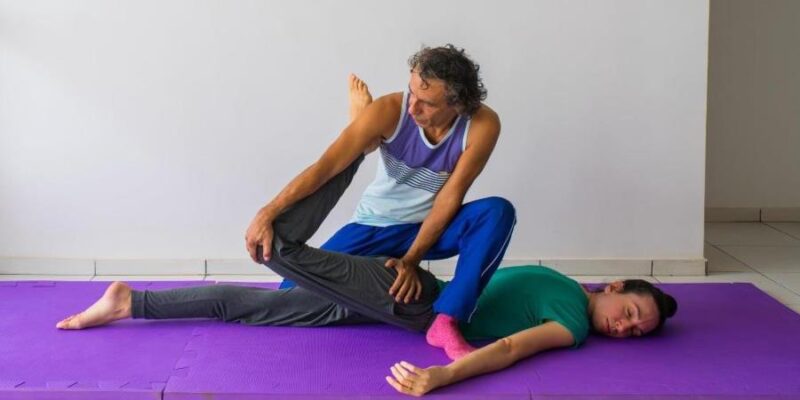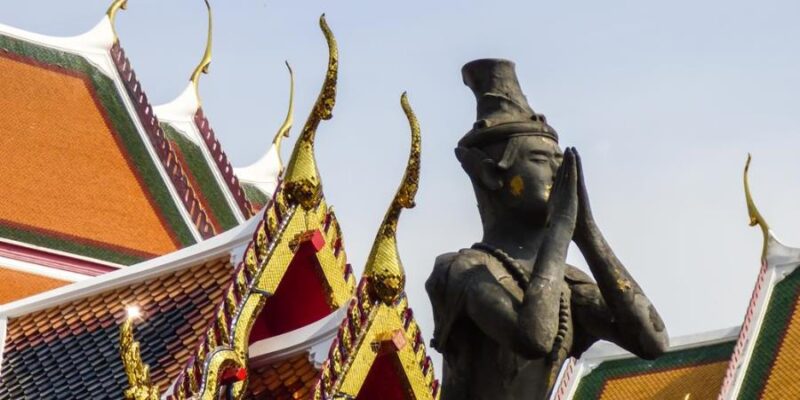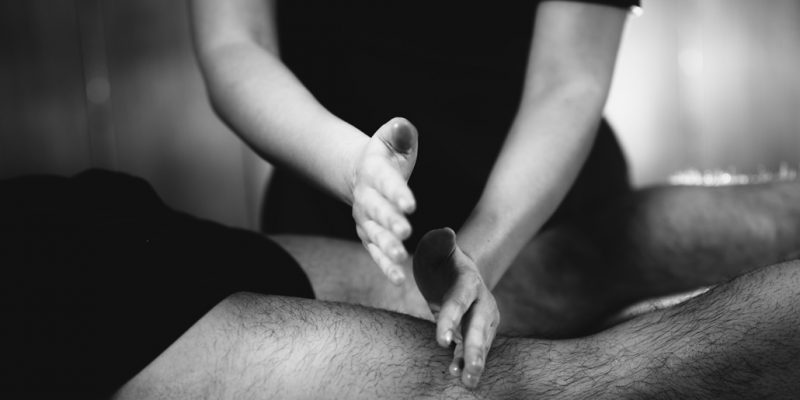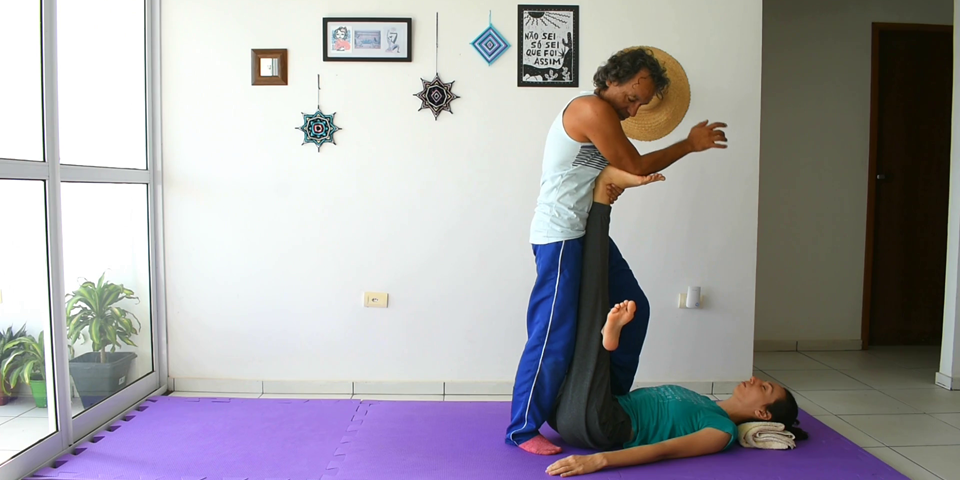
In this post, I will explain the origins and function of a famous — or perhaps rather notorious — Thai Massage stretching technique, called the Spanish Inquisition (see the lead image of this post and the video below this post).
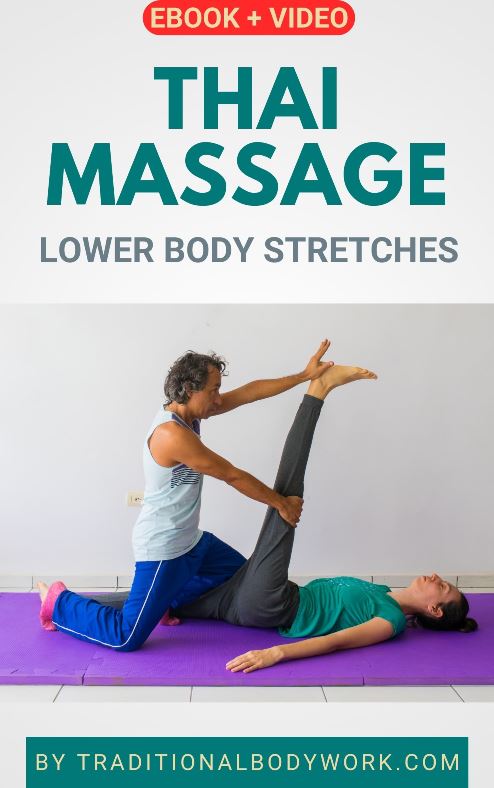
The term “Spanish Inquisition” for this stretch was (most probably) coined by Asokananda, a Thai Yoga Massage teacher who was the founder of the Sunshine Network and also wrote one of the first Thai Massage books for Westerners in the 1980s, called The Art of Traditional Thai Massage. In that book, by the way, he explains and demonstrates the Spanish Inquisition technique as part of a full body Thai Massage routine.
Now, the Spanish Inquisition took place between 1478 and 1834 in Spain, and its purpose was to combat heresy, that is, beliefs or opinions that were contrary to orthodox religious doctrine, notably Christian. Today, however, it’s commonly agreed upon that the Inquisition was at least partly used to get rid of political opponents (or those who were considered a threat) and consolidate power in the monarchy of the newly unified Spanish kingdom. The period is known for its brutal methods to extract “confessions of heresy,” using a range of physical and mental torture methods.
So, the Thai Massage stretch we’re talking about here is considered a kind of “torture,” and hence the name. That sounds kind of funny now, but of course its name is derived from a not-so-funny thing. But okay, well, the Spanish Inquisition stretch is basically a stretching technique for the hamstrings (back thigh muscles) and calf muscles, which places and holds the receiver in a firm, fixed position in which they actually cannot move (away) any longer to escape the procedure applied.
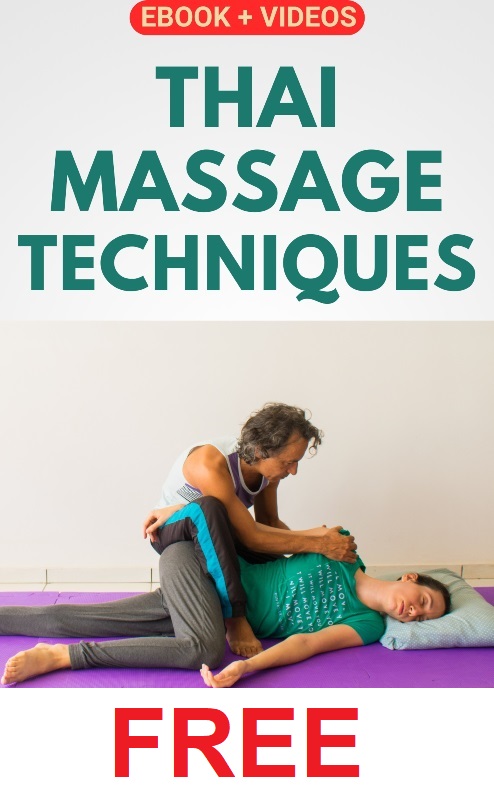
Moreover, the Spanish Inquisition stretch is typically a strong, deep, and intense stretch (often experienced as painful by the receiver), although it depends a bit on how much pressure the masseur i.e. “therapist” applies. Yet, it’s a very versatile Thai Massage technique that not only engages the hamstrings and calves, but also the plantar region (sole) of the feet, the toes, and ankle joints. The sole of the feet can be manipulated with forearm-rolls to massage them, or with the elbows to give acupressure (as you can see in the video below), and one can use the hands to flex and mobilize the ankles and toes.
The position of the leg that’s lifted also defines how the muscles are engaged. Typically one would use a perpendicular position of the leg to give pressure and stretch the muscles, but the leg can also be placed in various other angles, which would engage the leg muscles (including the hip and pelvic bones) somewhat differently.
In any case, we’ve made a short video to demonstrate the Spanish Inquisition. You can watch it down here.



